Crashing is part of cycling as crying is part of love.
Johan Museeuw
- The Lion of Flanders
Crashing is part of cycling as crying is part of love.
Johan Museeuw
- The Lion of Flanders

Conquer the Mountain. Find Your Freedom.

Conquer the Mountain. Find Your Freedom.
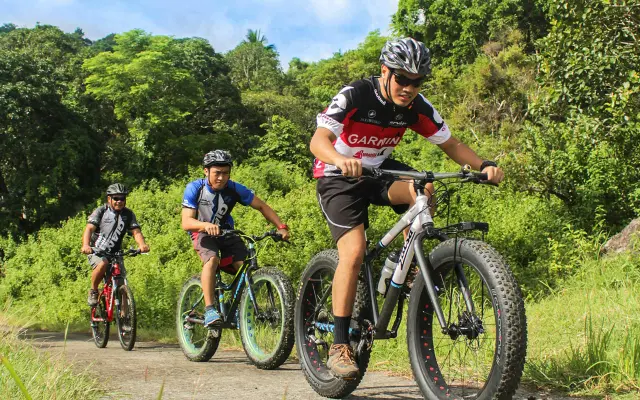
The pre-dawn light cast long shadows as I hit the trail, eager for solitude. But the rustling in the bushes startled me. Suddenly, a wild boar with its young emerged, forcing me to speed up. As I rounded a bend, narrowly missing a surprised hiker, his angry claim echoed. Shaken, I halted, a question burning in my mind:
Mountain bike trails are shared spaces, so prioritize safety and courtesy! Yield to hikers, horseback riders, and uphill riders (check signs for exceptions). Announce yourself on blind corners, slow down significantly or stop for slower riders, and step off the trail carefully when yielding.
Choose trails suited to your skill level and always check park regulations before riding – a little trail etiquette goes a long way for a happy ride for everyone!
Sharing the mountain is all about respect and keeping the stoke alive! On those sweet, winding trails, you might encounter all sorts of fellow adventurers. But who gets priority when paths get narrow?
Buckle up, because this cluster post dives deep into the who, why, and how of yielding the right of way on mountain bike trails, with a special focus on uphill climbers and keeping the climb smooth for everyone.
Here’s why uphill riders generally get priority on mountain bike trails:
Momentum Matters: Imagine yourself pushing hard uphill. Suddenly, you see a downhill rider coming straight at you around a bend! Downhill riders have the benefit of gravity, making it harder for them to stop quickly if they see you at the last minute. Uphill riders, on the other hand, need more space to maneuver and potentially stop if necessary.
Limited Visibility: Uphill riders can have a limited view of the trail ahead due to the incline or their handlebars. This can lead to surprise encounters with downhill riders if they don’t yield.
Effort: Climbing uphill is physically demanding. Stopping and restarting uphill can be tiring and requires more technical skill. Yielding allows uphill riders to maintain their momentum and complete their climb more efficiently.
Trail Impact: Stopping and starting frequently on an uphill section can create more wear and tear on the trail surface. By allowing uphill riders a clear path, you can help minimize trail damage.
Here are some additional points to consider:
Who Gets Priority? Mountain bike trails are shared spaces, so knowing who gets priority is key to a smooth and safe experience for everyone. Here’s the general rule:
Yield to hikers, horses, and uphill riders (unless signs indicate otherwise).
Hikers and horses are more vulnerable than cyclists. Uphill riders have less momentum and visibility compared to downhill riders.
Encountering Horses: Dismount well off the trail and give them space. Horses can be startled easily by bikes. Be respectful and patient, allowing them to pass comfortably.
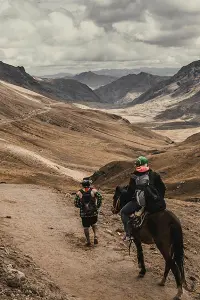
Discouraging Muddy Trails: Avoid riding on muddy trails. This minimizes trail erosion and protects the trail for everyone. Look for alternative routes or wait for drier conditions.
General Yielding: Yielding means slowing down, establishing communication (bell or call out), and being prepared to stop if necessary to allow other users safe passage.
Additional Tips:
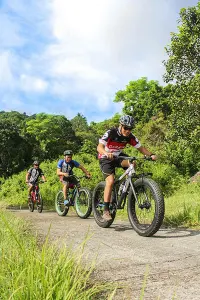
Uphill Priority: Again, uphill riders generally have less momentum and visibility compared to downhill riders. This makes it more challenging for them to stop quickly or maneuver around obstacles. By yielding the right of way, especially on uphill sections, you acknowledge this challenge and contribute to a smoother flow of traffic.
Slow Down and Move Aside: On single tracks (narrow trails with space for only one rider at a time), completely stop and move aside to allow uphill riders a clear path. This allows them to maintain their momentum and continue their climb efficiently.
Minimize Noise:
Respect the Wildlife: Animals rely on sound for communication, predator detection, and navigation. Loud music disrupts these natural processes and can even scare them away. Additionally, it can be stressful for them.
Share the Tranquility: Mountain bike trails are shared spaces. Loud music can be disruptive for hikers, cyclists, and anyone seeking a peaceful experience in nature.
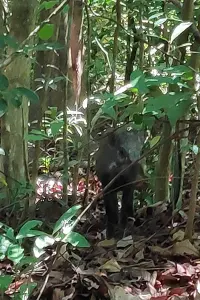
Enhanced Awareness: Lower music allows you to hear potential hazards approaching and enjoy the sounds of nature, making your ride safer and more connected to the environment.
Mutual Courtesy: Minimize noise to show respect for other trail users. Everyone can enjoy the sounds of nature and have a more peaceful experience.
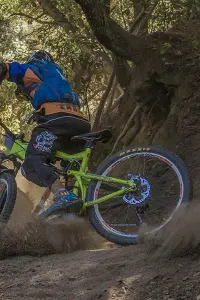
Gear Up for a Smooth Ride: Maintain your bike, carry basic tools for minor fixes, and wear a helmet. This keeps you safe and prevents breakdowns that could slow you down or endanger others.
Respect the Trail: Avoid riding on muddy trails when the ground is soft. This minimizes trail erosion and keeps the trail healthy for everyone.
Ride Open Trails Only: Obey all posted signs and closures. This ensures your safety, avoids trespassing on restricted areas, and allows maintenance crews to work effectively.
“Ride Smart” on mountain bike trails is about enjoying a thrilling ride while prioritizing safety, respecting the environment, and minimizing your impact on the trail itself.
The U.S. National Park Service’s golden rule for trails is simple: Treat others as you’d like to be treated, and respect the wildlife and land. Sharing the trail fosters connection and appreciation for the outdoors. By following the golden rule, you contribute to a positive experience for everyone.
Want to learn more about hiking etiquette in US National Parks? Check out this helpful resource here:
Hit the trails with fellow riders! Find cycling groups or events in your area to explore new paths, share the stoke, and experience the joy of mountain biking together.
Keep exploring! Dive deeper with related posts. HERE